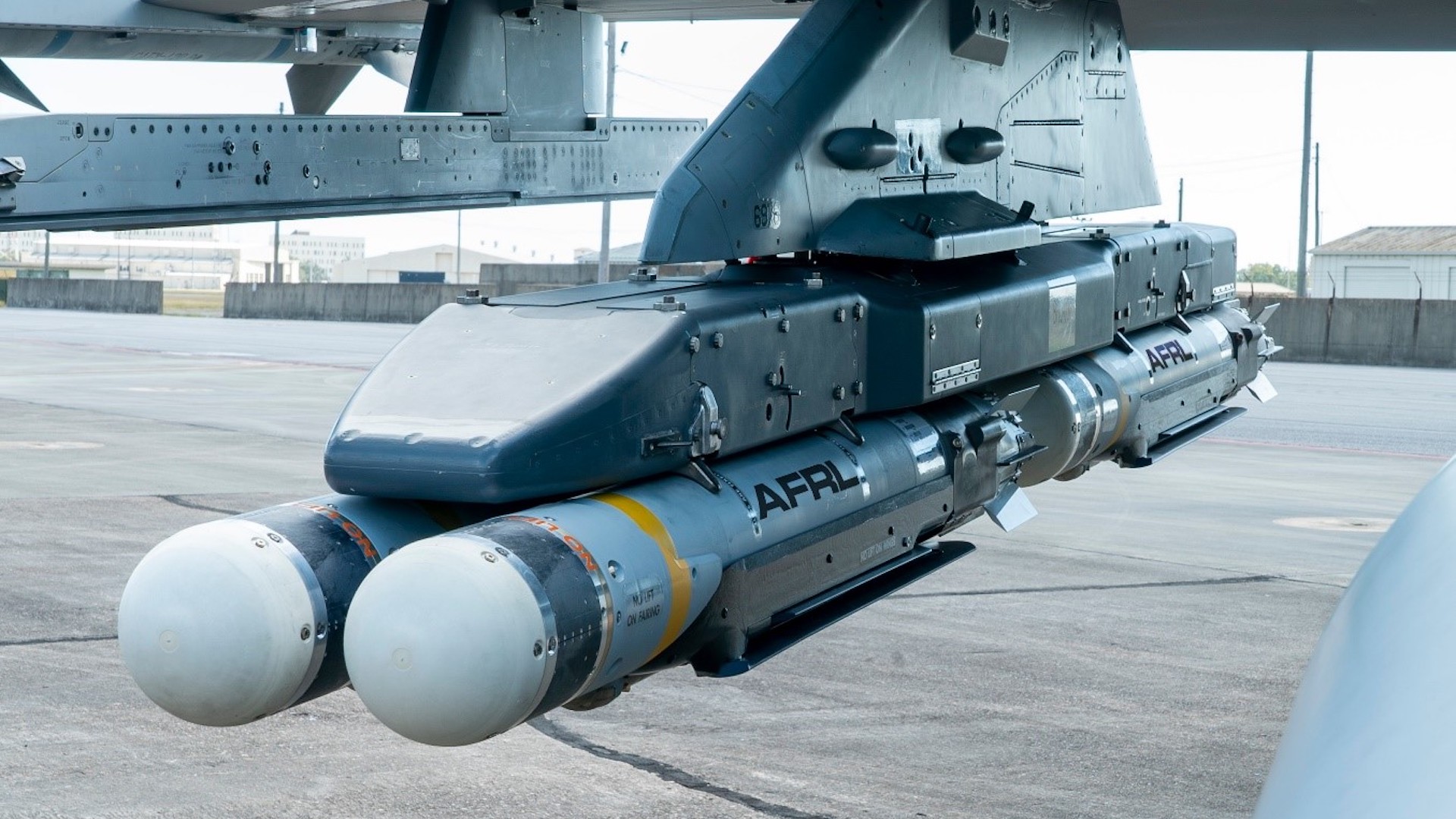

The age of air-launched munitions which can work together to identify, locate, and take out targets in a crowded battlespace is officially upon us.
The Air Force announced last week that the service had conducted the first flight demonstration of its ‘Golden Horde’ weapons system in mid-December involving a pair of Small Diameter Bombs configured with a “collaborative autonomy payload.”
The munitions were released from an F-16 Fighting Falcon at Eglin Air Force Base in Florida, after which they “established communication with each other and their seekers detected a GPS jammer,” according to an Air Force press release.
Networked collaborative weapons are designed to share data, interact, and develop and execute coordinated actions together in a complex environment, according to the Air Force Research Laboratory, so far that seamlessly shared data “thereby improv[es] the effectiveness of the entire swarm” of munitions.
Related: The Army wants a drone swarm to back up its next-generation helicopters against enemy air defenses
It’s worth noting that the weapons are not completely autonomous: the Golden Horde system uses what the AFRL calls “play-calling,” which involves enacting established collaborative behaviors only when certain predefined conditions are met by the swarm.
“Golden Horde uses a collection of plays called a Playbook,” according to the AFRL. “Loaded prior to the mission, the Playbook provides a choice of plays from which the weapons can choose.”
Indeed, during the test, the munitions “referred to pre-defined Rules of Engagement (RoEs), a set of constraints preloaded by a mission planner, and determined that the jammer was not the highest priority target,” according to the Air Force. “The weapons then collaborated to identify the two highest priority targets.”
Unfortunately, the test wasn’t a complete success. Due to “an improper weapon software load, the collaboration guidance commands were not sent to the weapon navigation system,” the Air Force explained. “Without the updated target locations, the weapons impacted a fail-safe target location.”
“The Golden Horde demonstration with the Small Diameter Bomb flights is an important step on the path to Networked Collaborative Weapon systems,” Chris Ristich from the Air Force Research Laboratory said in a statement. “Completion of this first mission sets the stage for further development and transition to the warfighter.”
According to Defense News, the Golden Horde is one of the three technology development efforts chosen by the Air Force in 2019 as a “Vanguard program,” alongside the service’s ‘Skyborg’ loyal wingman program and the Navigation Technology Satellite-3.
Now, I know what you’re thinking: semi-autonomous missiles that talk to each other are several baby steps towards giving the United States a SkyNet, and we all know how that turns out. Luckily, Air Force officials have actively emphasized that the play-calling capabilities utilized by the Golden Horde are far different than the independent decision-making of artificial intelligence.
“We get that question a lot,” as Col. Garry Hasse, director of AFRL’s Munitions Directorate, told Defense News in an interview last year. “With all the talk about artificial intelligence and other things in Terminator movies … [there’s] certainly some trepidation of what independent capability a weapon may have.”
Here’s an AFRL video detailing how networked weapons are designed to work. For more on the technical details of the Golden Horde, I highly recommend this explainer from our colleagues at The War Zone.

Featured image: Four Collaborative Small Diameter Bombs (CSDBs) hang from the wing of an F-16 fighter from the Air Force Test Center’s 96th Test Wing at Eglin AFB. Two of the bombs were dropped during the first flight demonstration of the Air Force Golden Horde Vanguard. (U.S. Air Force photo)
